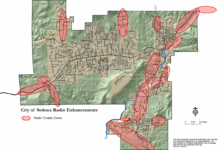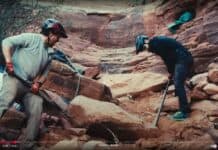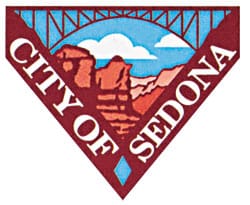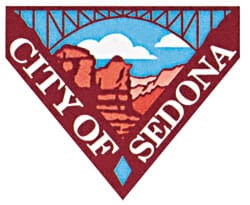Trash talk is usually insulting. In the case of a town like Sedona — located in the middle of the Coconino National Forest without sufficient means to dispose of its garbage — it’s the trash that is the insult.
By Mike Cosentino
Larson Newspapers
Trash talk is usually insulting. In the case of a town like Sedona — located in the middle of the Coconino National Forest without sufficient means to dispose of its garbage — it’s the trash that is the insult.
As Sedona’s residential and tourist populations increase, so does the need to dump, both legally and illegally.
Illegal dumping on public lands around Sedona motivated the Sedona City Council to research the possibility of locating a garbage transfer station in or near the city.
City leaders began a hunt Sept. 25 for a location that would provide residents a convenient place to put their garbage.
"We [also] want to explore a transfer station in Sedona," said Heather Provencio, district ranger for the Coconino National Forest’s Red Rock Ranger District.
"Our patrol people have become garbage men and that is not what they should be doing," she said.
Two sites considered
The two sites being
considered for a transfer station are: Girdner Pit off Cultural Park Place and another location where the current wastewater treatment plant sits off Hwy. 89A between Sedona and Cottonwood.
Specifically, officials are taking a hard look at Girdner Pit, where the Red Rock Ranger District stores materials, according to Rob Adams, Sedona city councilman.
Adams called it "an ideal spot."
"It is well-concealed and isolated, yet it is close and convenient," he said.
"It is ideal in many ways," Provencio agreed. "It does not have visual impact, which is important in Sedona, and good access."
Three to five acres are needed for a transfer site according to Chip Davis, Yavapai County District 3 supervisor.
The U.S. Forest Service is willing to look at sharing the Girdner Pit location with the city, but it depends on how much space it needs, Provencio said.
"We have several conflicts with using it. We have major concerns with recreation conflicts," Provencio said.
There is a trailhead close to the Girdner Pit location and the trail crosses the road, according to Provencio.
"We have asked the city to explore other locations," she said.
Convenience was a factor in favor of the Girdner Pit site, but potential developments may be a drawback.
"We have just given this a surface look right now. We are swamped with work," said Eric Levitt, Sedona city manager.
Due to workloads, city staff was not given a deadline to return with information, but further research will be scheduled, Adams said.
Levitt and Adams agreed the Girdner Pit site, being in the city limits, would be more convenient, more likely to be used and therefore have a greater impact on illegal forest dumping.
Pros and cons
One advantage of the wastewater treatment plant site is the city’s ownership of the surrounding property. Sedona owns 324 acres around the plant.
Another advantage is the plant location’s remoteness from potential residential commercial development.
Disadvantages for the plant site include insufficient infrastructure.
"The roads out there are dirt. They would be usable for city vehicles, but if it was open to the public, improvements would have to be made," Levitt said.
"We also would need water and electricity out there," he said.
Advantages of the Girdner Pit site, besides convenience, include sufficient paved roads and easier utility access.
Disadvantages are that "it is on forest service land requiring a NEPA process. One of the things city staffers will be researching is the cost of that," Adams said.
The National Environmental Policy Act requires several specific steps including public meetings and environmental impact studies and statements.
Staff estimates the cost for the NEPA process to be between $20,000 and $50,000.
Other disadvantages of the wastewater plant site include the absence of traffic signals off Hwy. 89A for access and, Levitt said, over the years the public has approached him with a myriad of uses for that land.
"There have been lots of potential uses suggested, not by council, but by the public," he said.
A film lot for use by the movie industry, a vineyard, parks and recreation fields since they are limited in town, a mixed housing area that could include affordable housing and a wetlands recreational site have all
been suggested.
Currently, the Audubon Society operates a limited access wetlands and bird sanctuary on the property.
"We’d like to expand that to an interpretive nature center someday," said Michael Durgain, a former board member of the local Audubon Society chapter.
"Sedona does not have a solid waste disposal department," said Levitt.
"One of the things we are considering is to make garbage pick up required" by city residents.
Paying for private garbage pick up is optional in Sedona.
A private company operates a small transfer station on Shelby Road within the city.
Mike Cosentino can be reached at 282-7795, Ext. 128, or e-mail to mcosentino@larsonnewspapers.com





















